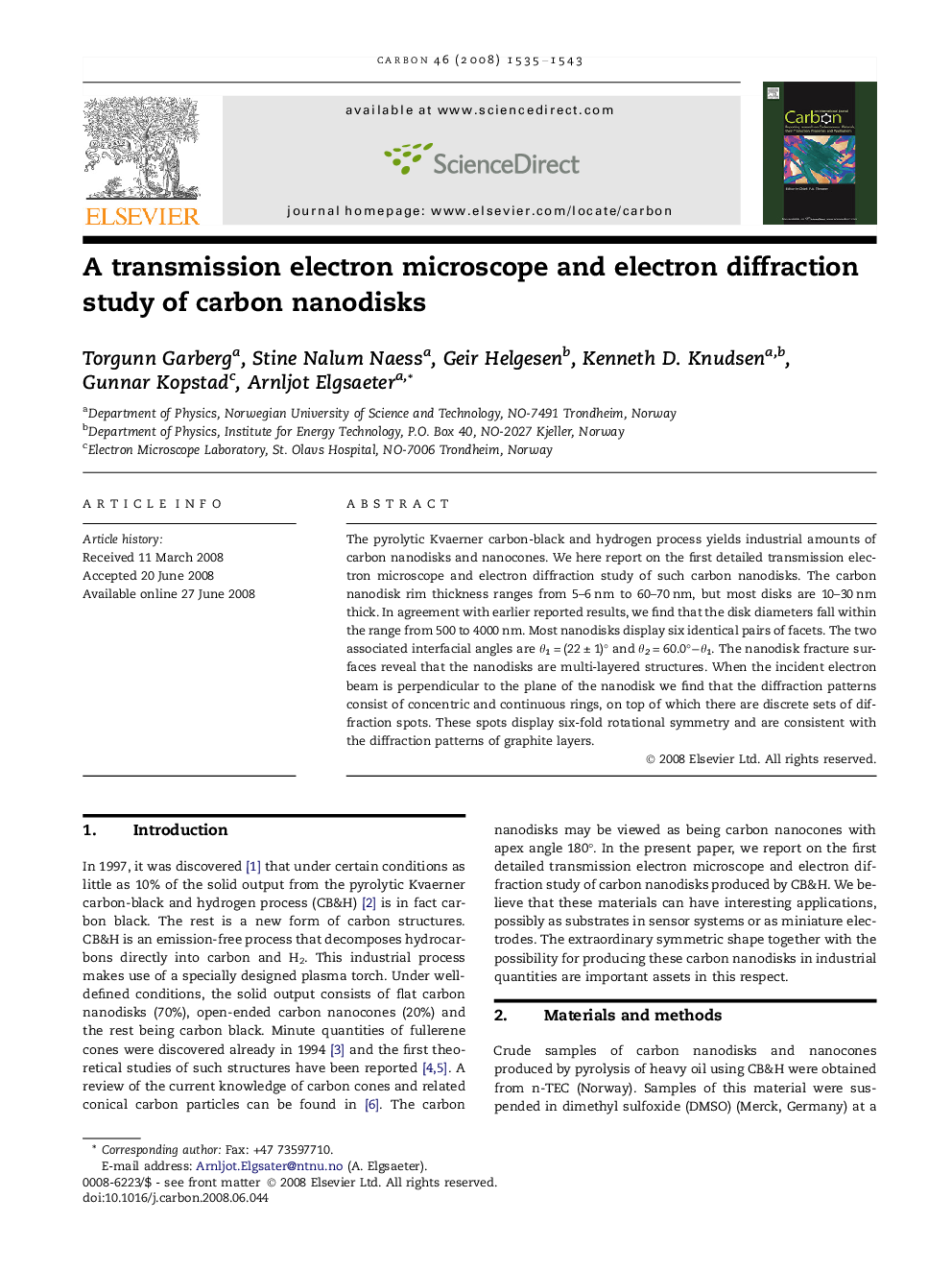| Article ID | Journal | Published Year | Pages | File Type |
|---|---|---|---|---|
| 1417873 | Carbon | 2008 | 9 Pages |
The pyrolytic Kvaerner carbon-black and hydrogen process yields industrial amounts of carbon nanodisks and nanocones. We here report on the first detailed transmission electron microscope and electron diffraction study of such carbon nanodisks. The carbon nanodisk rim thickness ranges from 5–6 nm to 60–70 nm, but most disks are 10–30 nm thick. In agreement with earlier reported results, we find that the disk diameters fall within the range from 500 to 4000 nm. Most nanodisks display six identical pairs of facets. The two associated interfacial angles are θ1 = (22 ± 1)° and θ2 = 60.0°−θ1. The nanodisk fracture surfaces reveal that the nanodisks are multi-layered structures. When the incident electron beam is perpendicular to the plane of the nanodisk we find that the diffraction patterns consist of concentric and continuous rings, on top of which there are discrete sets of diffraction spots. These spots display six-fold rotational symmetry and are consistent with the diffraction patterns of graphite layers.
